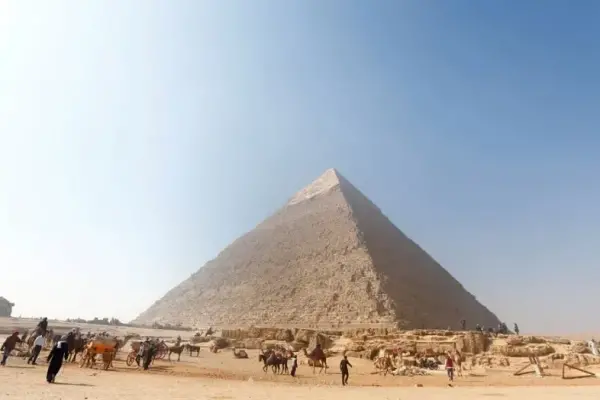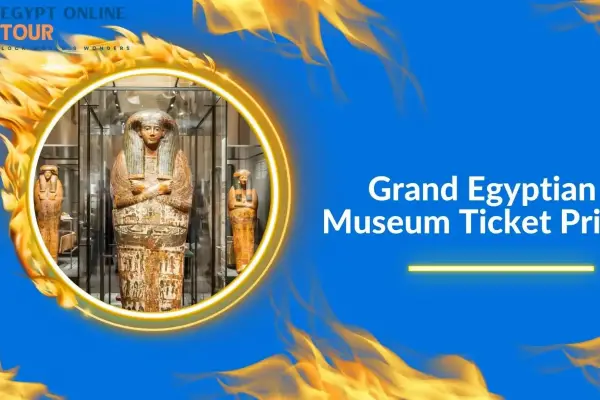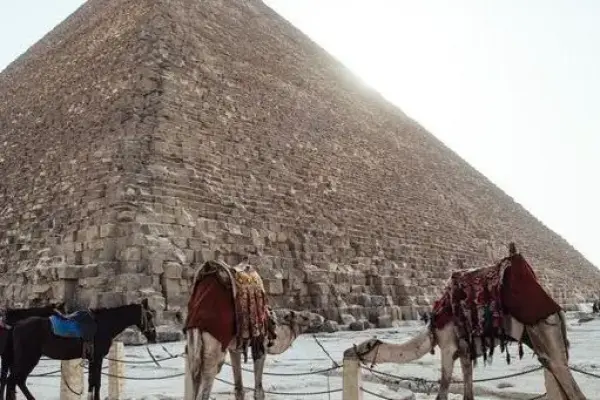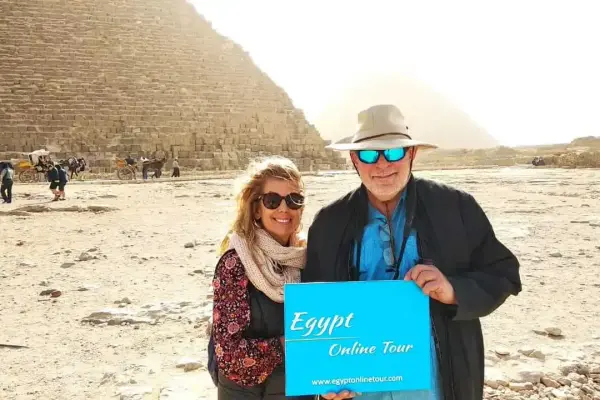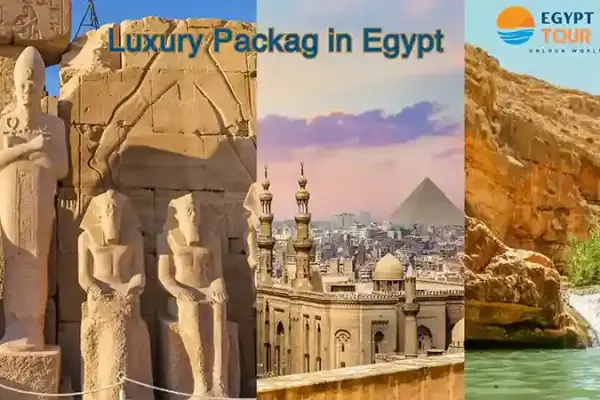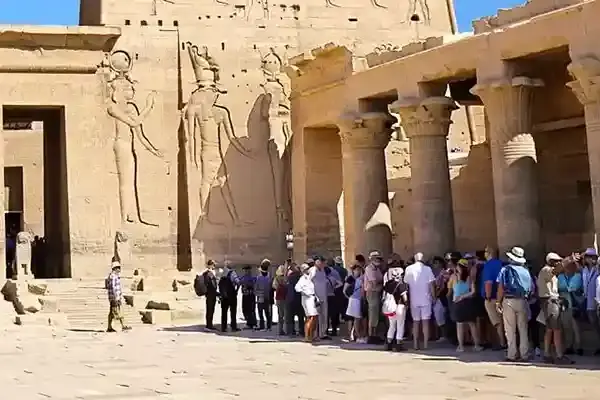The History of Ancient Nubia: A Legacy of Power and Culture
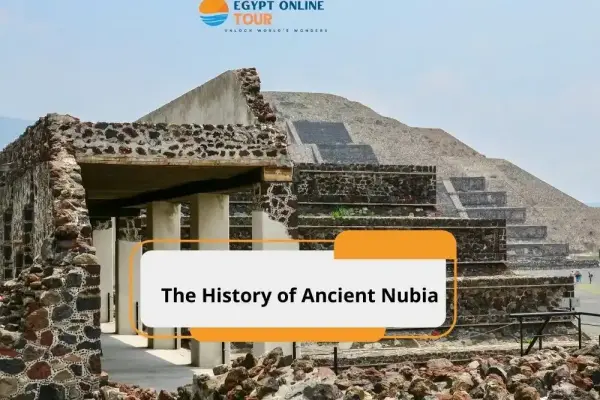
- Feb 03, 2025
- Ancient Egyptian Civilization
- 8,431
The Nile Valley whispers tales of a kingdom often overshadowed by its northern neighbor, Egypt, yet possessing a distinct grandeur all its own. Ancient Nubia had forged a unique identity, blending greatness with a remarkable simplicity in their way of life. This article delves into the history of Ancient Nubia, this extraordinary civilization, exploring its cultural contributions and its enduring legacy. Be prepared for this exciting journey.
Table of contents [Show]
The History of Ancient Nubia
By 5000 BC, the African population who lived in what is now the Great Sahara began moving towards the Nile River in the Nubia area. Initially, they were herders and hunters of megafauna, but over time they turned to hunting and farming. As new groups flowed in from the south, Nubia became home to a diverse mix of African peoples.
Many Nubians settled on the banks of the Nile, making their way north through the desert. Farmers relied on the cultivation of grains, pulses, dates, and possibly melons, but the real wealth was in livestock herds, which served as a symbol of social and economic status. In the desert areas, Nubians extracted gold and red garnets along with other minerals. Through the barter system, they exchanged these riches, along with ivory, animal skins, hardwood, incense, and dates, with Egyptians in the north, versus cereals, vegetable oils, wine, beer, textiles, and manufactured goods.
Which is older, Nubia or Egypt?
Egypt is one of the oldest civilizations in history compared to Nubia. Although both civilizations have old roots, ancient Egypt dates back to around 3100 BC, when Pharaoh Narmer unified Upper and Lower Egypt under a single central rule.
Nubia, which is located south of Egypt, has also witnessed the formation of great civilizations, most notably the Kingdom of Kush, which emerged in subsequent periods. Vineyard culture is one of the oldest cultural manifestations in Nubia, dating back to about 2500 BC, making it more recent compared to the early stages of Egyptian civilization.
Archaeologists and researchers have found more ancient artifacts in Egypt than in Nubia; the general consensus suggests that Egyptian civilization was more developed early in history than Nubian civilizations.
In short, ancient Egypt is older than Nubia, but both civilizations have played a vital and fundamental role in shaping the region's history and cultural impact.
- You may also be interested to know when did Ancient Egypt start and end?
Who are the Nubians?
The Nubians were the initial inhabitants of what is now southern Egypt and northern Sudan. Historically, one of the greatest civilizations in history was based in what was formerly known as Nubia. Indeed, for just over a century, the Nubians dominated ancient Egypt! In tribute to Nubian archery prowess, the Egyptians called the Nubian territory "Ta-Seti," or "The Land of the Bow." Despite being close to Egypt, the Nubians had their own unique culture. However, during the period of the new kingdom (1550 BC), the Nubians and Egyptians became so closely connected that some experts believe they are nearly identical because of the mixing of the two cultures.

Where are Nubians originally from?
Modern scholars and writers asked, Who are the Nubians descendants of? and differed widely about the ancient origins of Nubian humans. Although many studies and research have been carried out in this regard, there is still no specific scientific agreement on the origin of the Nubians. Most of them have traditionally searched for the Nubian man's first habitat before his presence in the Nile Valley. We have many opinions and conclusions, the most important of which are:
- The Nubans belong to Kush, or Cash, which is mentioned in the Torah as well as the Bible.
It is Kush Ben Ham Ben Noah, grandfather of the Egyptians and father of "Nuba," who they believe to be the father of the present Nubian nations that emigrated to Africa after the deluge and settled in parts of which It was named after them. The proponents of this view therefore see the unity of the ancient Nubian and Egyptian ancestry, both of which, in their view, belong to the protective strain of the Caucasian dynasty.
The Nubians are part of the ancient Egyptian dynasty that has been displaced south in some historical periods and settled in those areas where their monuments now exist.
The owners of this view may see the existence of Egyptian monuments of pyramids, temples, and otherwise in the ancient Nubian regions as evidence of what they went to. However, they reply that throughout their long history, the Nubians have mixed with different cultural currents and not only Egyptians. It is well established that the Romans, the Greeks, the Arabs—even the peoples of East Asia and India—have also contributed to shaping today's Nubian culture, to varying degrees. Therefore, while searching for the origins of the Nubian groups, we cannot reckon with the existence of such effects. Cultural uniformity between groups can be traced back to the influence and impact factor that is usually the result of continuous communication between different nations for a long time throughout history.
- The Nubians are of negro origin who migrated to the region from Kordofan and Darfur in western Sudan through the Sahara desert of the Nile Valley and from the eastern regions.
The proponents of this view inferred images and statues of the Nubian monarchs found on the walls of the ancient Nubian temples, where they all carried the negro body. They were also based on the similarity of the Nubian language with some Nubia Mountains languages in some linguistic vocabulary. In fact, this aspect of language has attracted the interest of many and has been subjected to various studies and research by specialized researchers and scholars, but no scientific evidence has yet been found to demonstrate the unity of origin or communication between Nubian and Nuba Mountain languages or other African languages at all.
- The Nubians may have come from Asia through the Red Sea from a very distant prehistoric era, losing their original features of survival and becoming what we see today.
- The Nubians originally grew up on the continent of Africa and then formed tribes, all of which settled along the Nile Valley, where their monuments now exist.
Hence, the proponents of this view take the Nubians' authenticity and deny any ethnic link between them and other populations to which some views have been expressed.
- The Nubans originally belonged to the Nobadi Bedouin tribe, which was traveling in the southern parts of Libya and Morocco.
They had come to the Nile Valley across Western Sahara and settled on its banks early in history, where they had acquired the skill of farming and lost their nomadic characteristics and indigenous language long-term survival. This view is based on the great similarity between the languages of some Bedouin tribes in North Africa and the Nubian language, in addition to the similarity in traditions and customs. Proponents of this view believe that the name of Nubia itself may have been derived from the name "Nobadi" or "Nobad".
The Nile River is an inspiration source for these great civilizations. 10 Days Round Trip Nile Cruise and Pyramids to recognize its charming beauty.
The Evolution of Nubia and the Nubian People
The date of Nubia can be traced from 2000 BC to 1504 AD, representing an important period in human history.
The first registered prince of Nubia, Alara, who was also King of Kush, laid the foundation for the 25th Napatan or Kushian dynasty in Napata, an area now known as the Sudan. His successor, Kashta, extended the dominance of the Kushis north, reaching the Vantin and good in Upper Egypt.
During the period of the new Kingdom of Egypt (1570 M - 1070 M), Pharaoh Thutmus I invaded about 1500 BC. This event was an important turning point in the history of the region, increasing the entanglement of Egypt's destiny and Nubia. Therefore, the rich fabric of Nubian history is not only a chronicle of kings and wars, but a testament to its people's resilience and adaptability in the face of a changing political landscape.
- The Nubia, famous for its great owners, was the cradle of power and civilization.
The Kingdom of Kush, most notably, was able to invade Egypt in the eighth century BC, leading to the formation of the twenty-fifth dynasty. This era in ancient Egyptian history was marked by the rise of many Nubian pharaohs and rulers who, for the most part, were seamlessly integrated into Egyptian culture.
While Nubians introduced elements of their own culture into Egypt, they largely adhered to current governing standards, artistic methods, religious traditions, temple designs and construction methodologies. They tried to revive the great tradition of building the pyramid, although their efforts were met with little success.
- Nubians dominated parts of Egypt for almost a century before they were defeated and eventually expelled by Assyrians.
Despite invasion periods, the relationship between Egyptians and Nubians has been largely peaceful throughout history, reflecting mutual respect and understanding that transcended regional conflicts. This enduring relationship between the two civilizations is a testament to their shared history and cultural exchange.
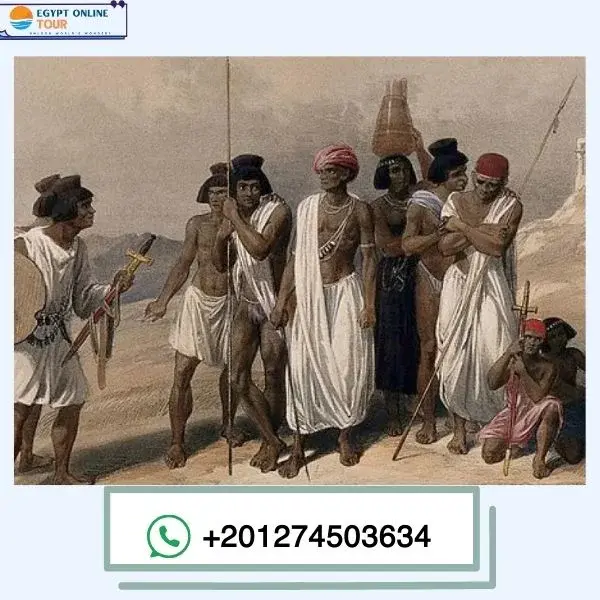
Nubian Temples
Nuba, named after "Nub" which means gold, is known for its gold mines, rare stones and majestic effects. The Nubian monuments, named on their site, not their construction, are an important archaeological site dating back more than 3,000 years. The region, home to most Nubians in Egypt, extends from Aswan to Abu Simble. It houses the famous Phiala Temple and the Temple of Abu Simbel, both of which were rescued by UNESCO in the mid-1960s due to the influence of the Aswan High Dam. These temples, along with 11 other sites built under the kings of Nuba, are attractions to visit on a cruise on the River Nile.
If you decide to visit Egypt soon and don’t define the places, a 10 Days Cairo, Aswan, Luxor & Hurghada Overland Tour will be suitable.
Abu Simbel Temple
The temples of Abu Semple are attributed to the great Ramses (1292-1186 BC), which was founded in 1200 BC to reverberate his great heritage, particularly his triumphs such as the Battle of Cadiz (c) and the maximization of the supreme god Amon. Next to it is another temple dedicated to his dear wife Nefertari, which pays tribute to the goddess Hathur.
For an unbelievable experience to visit Abu Simbel Temple and more:
8 Days Cairo to Abu Simbel and Back Overland.
Philae Temple
The Philae Temple is the last of its kind built in Egypt during the Ptolemaic era between 380 and 360 BC. It is known for harboring the legendary stories of Isis, the god of motherhood and the therapist of Osiris's wife, the master of the underworld. It was a high-frequency destination for Egyptians, and Nubians and trips from as far away as Greece and Crete.
Granite Quarries
Granite Quarry is an unusual scene, famous for its internal contents. The exploration for granite in Aswan has two incomplete obelisks. If one obelisk had been completed and lifted, it would have been nearly a third greater than any other obelisk in Egypt, and it is expected that it would have been ordered by Queen Hatchepsut. Aswan and Luxor deserve a visit; it’s a choice to experience 8 Days Cairo, Luxor, Aswan Classic Tours.
Qasr Ibrim
Qasr Ibrim, once known as a castle and an important city perched on the Nile cliff, is now located on a rocky island in the heart of the Nile River due to the construction of dams, making tourist visits difficult. Right now, the only way to see the fort is from the deck of the lake boat, where there are no other options.
Kalabsha Temples
The Temple of Kalabsha was erected around the 30BC during the Roman period as a tribute to the Noble God of the Sun Mandolis, but it never ended.
Beit Al-Wali Temple
Beit Al-Wali House is another wonderful temple constructed by Ramses II. It was among the Nubian temples of Ramses II that were set up to maintain Egyptian domination of Nubia and is believed to be the first temple built for this goal.
Temple of Dakka
A small refuge dedicated to Thoth, the god of wisdom and knowledge, the Temple of Dakka was expanded during Roman times and served as a fortress on the Nile River.
Maharraqua Temple
Maharakwa Temple is a small, incomplete temple with a mysterious past. Scientists failed to decipher who built it or its function. It has a unique feature: a spiral staircase leads to the ceiling. This is the only Nubian monument of this design.
Amada Temple
Amada Temple is the oldest temple in Nubia. It was constructed in the eighteenth family by Pharaoh Thutmus III and was dedicated to Amon and Ri-Horakhti. Many pharaohs, including Ramses II, were added to this temple over time.
Temple of Deir El Bahari
Temple of Deir El Bahari was built by Ramses II. It is a rock-engraved temple dedicated to irrigation of Horakhti, a merger between the gods of Horus and Ra'a, where Horus was the god of heaven and Ra'a was the god of the sun.
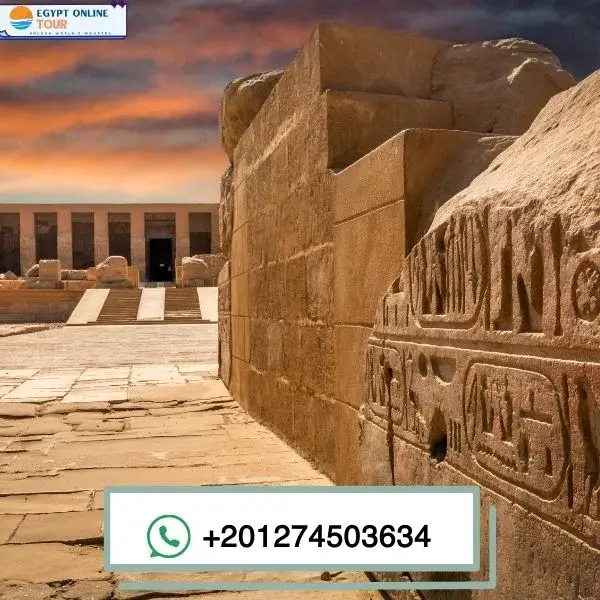
Nubian Museum and Symbols
The idea of the Nubian Museum arose during the international campaign to save the monuments of the Nuba launched by UNESCO at the request of the Egyptian government in 1960, to include the archaeological, historical, civilizational, and environmental heritage of the Nuba. Studies of the museum project began in the early 1980s, with committees formed from the Supreme Council of Antiquities and experts from Egyptian universities and UNESCO, which ended with the attribution of engineering designs to architect Dr. Mahmoud Al-Hakim.
The Nubian Museum was inaugurated in 1997 with a distinctive three-storey architectural design reflecting the traditional Nubian architecture.
Description of the Nubian Museum
Its walls were decorated with sandstone and pink granite inspired by the nature of the surrounding rocky area. It was awarded the Agakhan Prize for Islamic Architecture as the best architectural building built in 2001.
The museum highlights the evolution of Egyptian civilization in Nuba through the ages geographically, socially, and culturally. The museum features thousands of artifacts and models of Nubian heritage through the main exhibition hall and the diorama showcasing local traditions and crafts in Nuba. The museum also includes a lecture hall, library, educational activities section, and theater, as well as an open amphitheater to display the Nubian folk heritage.
Don’t miss the opportunity; it’s time to explore Egypt Luxury Tours.
Description of the Nubian Museum's garden
The museum's garden is an open museum with a cave with prehistoric rock inscriptions and a waterway symbolizing the River Nile; the artery of ancient Egyptian civilization, a group of water channels, and arguments to illustrate the relationship between the river and the Nubian village surrounded by plants that were widespread in ancient times. In addition to a model of the Nubian House that reflects glimpses of the daily life of Egyptians in Nuba.
The Nile River is the first inspiration for such civilizations. Update your information with 5 facts about Nile River.
Nubian Villages and Customs
Nubians' villages are usually small, cohesive communities where people live in traditional mud brick houses and are deeply associated with the land and their cultural heritage. They often have a strong sense of community and a small social network and depend on subsistence farming and small trade for their livelihoods.
Despite the challenges posed by modernization and urbanization, Nubian villages remain important centers of Nubian culture, where traditional practices and customs are transmitted from generation to generation. These ethnic groups are native to the area around the Nile River, what is now Sudan and southern Egypt.
These villages are usually made up of mud brick houses and are known for their unique architectural program and cultural traditions. Nubian villages have a rich history and cultural heritage, many of which have been occupied for thousands of years.
If you are thinking about visiting such great places, you need to know first about Egypt Classic Tours.
How to explore the Nubian village for unforgettable memories?
- Nubian houses are made of clay bricks and have distinctive designs. You can meditate on the complex details and learn about the construction techniques used by Nubians.
- Visit vibrant local markets selling traditional goods, textiles, and spices.
- You can attend cultural events, such as dance shows and traditional festivals, and learn about Nubian customs and traditions by spending a day here.
- Nubian cuisine is a unique blend of African and Middle Eastern flavors. It includes dishes such as Kushari (basic food made up of rice, lentils, and pasta) and Asida porridge (sweet pudding made of corn flour). These authentic dishes!
- If you are curious to know the most famous Egyptian cuisine, Top 10 most common foods in Egypt will be beneficial.
- Take the Nile River journey through the Nubian village, providing a scenic and comfortable way to explore the area.
- Visit the ancient ruins that are home to many ancient monuments, including the temples of Abu Simbel, the Temple of Dhaka, and the Temple of Kalabsha.
- You can visit local museums and cultural centers to learn about the Nubian people, their history, and cultural heritage."
- If you want to explore more, Egypt tour packages will be your guide.
Nubian Crafts
Some of the crafts were scattered in the land of gold.
Nubian dishes industry
One of the distinctive Nubian crafts of Nubian women, because they are the most practiced, is in the form of colorful dishes, called shawir nubian dishes or crag dishes, made from palm fronds or colored threads with Nubian heritage drawings and used to cover food and decorate the walls of Nubian houses.
Wicker Industry
Also common among Nubian women is the palm leaf conversion industry, which brandishes each other in a way that narrows or expands depending on the quality of the product to different forms of dishes or furniture and furnishings, ranging in length from 20cm to 40cm, while the width ranges from 2cm to 3cm.
Boating Industry
The kinds of boats made between the peck, the pole, the royal and the sailboats vary, with special Nubian additions such as colors, ornaments and exterior inscriptions, and Nubians are interested in making small boats that link the village of West Sohail, especially to other places, also a tourist and recreational way for their visitors.
Loom industry
An ancient Egyptian industry still held by the people of Nuba, the fabric and clothing industry through the Nawal Machine is one of the machines used by the ancient Egyptians and relies on moving the threads upwards and some downwards, which forms an angle between the two layers called the "self" angle, which is the basic angle in the loom and its characteristic.
As a result of Nubia's association with crafts, the State has set up the so-called Nubian House to collect small and manual projects associated with them and provide the supplies and tools of each craft.
- If you are excited to learn more about ancient crafts, I advise you to read what did craftsmen do in Ancient Egypt?
Summary
Ancient Nubia, a kingdom flourishing along the Nile, left behind a legacy of both impressive achievements and a grounded connection to their land. Through their reverence for tradition and balanced lifestyle, the Nubians offer a compelling example of a civilization that achieved greatness while maintaining a profound simplicity. The history of ancient Nubia is one of resilience, innovation, and a unique cultural identity that deserves to be told. Egypt Online Tour acts as your compass while visiting Egypt. You will rely on it and be free to enjoy and make unforgettable memories.
FAQs
What is the brief history of Nubia?
From 2000 BCE to 1504 AD, when Nubia was split between Egypt and the Sennar sultanate and became Arabized, Nubian history may be traced. Later, in the 19th century, it became part of Ottoman Egypt, and from 1899 until 1956, it was the Kingdom of Egypt. Nubian worship is depicted.
What race were the ancient Nubians?
"Nubians can be considered a group with substantial genetic material belonging to Nilotes that later absorbed much gene flow from Eurasians and East Africans," the authors concluded. Eurasian populations produced the strongest admixture, which was probably rather widespread
What are some key facts about Nubia?
Some of the first kingdoms in Africa were found in Nubia. Known for its abundant gold reserves, Nubia served as the entry point for the movement of luxury goods from sub-Saharan Africa to Egypt and the Mediterranean civilizations, including ebony, ivory, and incense
Do Nubians still exist?
Even now, the people who live in southern Egypt and Sudan still call themselves Nubian. In addition to Arabic, they speak the Nubian language, which is in decline. The climate here is among the worst in the world. Rainfall is rare, and temperatures are high for the majority of the year.
Popular Categories
Popular Posts

Top Alexandria Beaches You Must Visit 2026
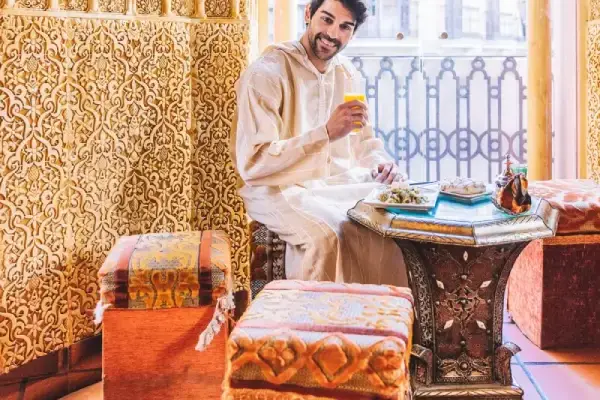
What are the important holidays in Egypt?
